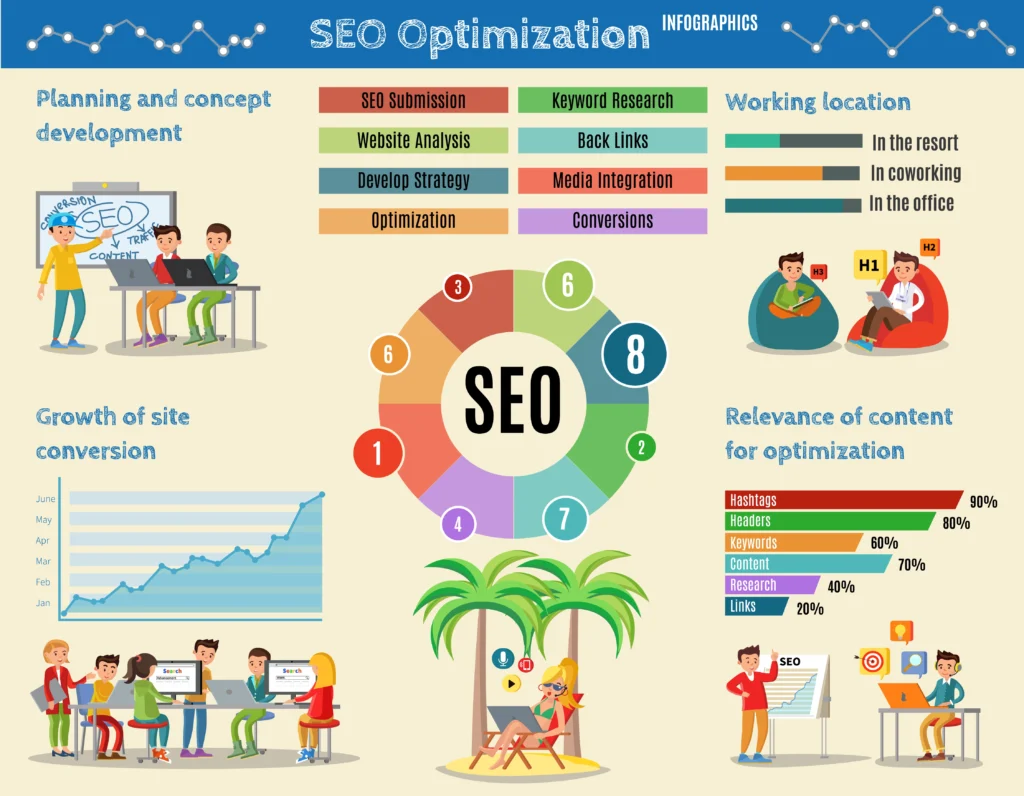Your latest B2B SaaS client just hit their organic traffic goals. Keyword rankings are climbing. Conversion rates are up. Now what?
Most agencies take screenshots, throw together some before-and-after numbers, and call it a case study. But here’s the problem: generic case studies don’t convert prospects or establish authority. They just blend into the noise.
Smart SaaS SEO agencies know that well-crafted case studies are their most powerful sales and marketing tools. They demonstrate expertise, build trust, and attract high-value clients who want similar results.
Here’s how to create SaaS SEO case studies that actually move the needle for your business.
Why SaaS SEO Case Studies Matter More Than Ever
The B2B SaaS space is crowded. Every agency claims they can deliver organic traffic growth and improve search engine optimization results. Prospects need proof, not promises.
A strong SaaS SEO case study serves multiple purposes:
- Builds credibility with potential clients who need evidence of success
- Demonstrates methodology behind your SaaS SEO strategy
- Showcases industry expertise in content marketing for SaaS
- Provides social proof that your organic traffic growth tactics work
- Differentiates your approach from generic SEO services
But creating compelling case studies requires more than just good results. You need structure, storytelling, and strategic presentation.
Choose the Right Client Success Story
Not every successful project makes a great case study. The best SaaS SEO case studies combine impressive results with relatable challenges that resonate with your target audience.
Look for clients with:
- Clear starting problems that your prospects face regularly
- Measurable improvements in organic traffic growth and conversions
- Interesting challenges that required creative SEO solutions
- Willing participation in sharing their story publicly
- Relevant industry alignment with your target market
Red flags to avoid:
- Clients with unique circumstances that can’t be replicated
- Success stories that rely heavily on paid advertising rather than organic search
- Results that took unusually long or required massive budgets
- Improvements that came primarily from technical fixes rather than strategic SEO

Gather Comprehensive Data and Metrics
Strong case studies are built on solid data. Before you start writing, collect comprehensive metrics that tell the complete story of your SaaS SEO strategy implementation.
Essential SEO Metrics to Track
Traffic and Visibility:
- Organic traffic growth percentage and timeline
- Keyword ranking improvements for target terms
- Search impressions and click-through rates
- Featured snippet captures and SERP feature wins
Content Performance:
- Content marketing for SaaS results and engagement metrics
- Blog traffic increases and time on page improvements
- Content pieces driving the most qualified traffic
- Internal linking improvements and page authority growth
Business Impact:
- Lead generation improvements from organic search
- Conversion rate optimization results from SEO traffic
- Customer acquisition cost reductions
- Revenue attribution to organic channels
Tools for Data Collection
Use these platforms to gather compelling metrics:
- Google Analytics 4 for traffic and conversion data
- Google Search Console for keyword and impression tracking
- SEMrush or Ahrefs for competitive analysis and ranking monitoring
- Screaming Frog for technical SEO audit documentation
Structure Your Case Study for Maximum Impact
The best SaaS SEO case studies follow a proven narrative structure that keeps readers engaged while demonstrating your expertise.
The Problem-Solution-Results Framework
Opening Hook (100-150 words) Start with a relatable scenario that immediately connects with your target audience. Avoid generic openings and jump straight into the client’s specific challenge.
Client Background (150-200 words) Provide context about the SaaS company, their market position, and why they needed improved search engine optimization. Focus on details that make the story relatable to prospects.
The Challenge (200-250 words) Detail the specific SEO problems they faced:
- Current organic traffic performance
- Competitive disadvantages in search
- Technical issues blocking growth
- Content gaps in their B2B content strategy
- Previous failed attempts at SEO improvement
Your Strategy (300-400 words) This is where you demonstrate expertise. Explain your SaaS SEO strategy without giving away proprietary methods:
- Initial audit findings and recommendations
- Keyword research approach for SaaS companies
- Content strategy development and implementation
- Technical SEO improvements and timeline
- Link building tactics specific to B2B SaaS
Implementation Process (200-250 words) Show how you executed the strategy:
- Timeline and milestones
- Team collaboration and communication
- Challenges encountered and solutions implemented
- Client involvement and feedback integration
Results and Impact (200-300 words) Present concrete outcomes with compelling visuals:
- Before and after metrics with specific percentages
- Timeline showing gradual improvements
- Business impact beyond just traffic numbers
- Client testimonial highlighting key wins
Write Compelling Copy That Converts
Your SaaS SEO case study isn’t just documentation – it’s a sales tool. Every section should reinforce your expertise while building confidence in your approach.
Make It Scannable
B2B decision-makers are busy. Structure your content for quick consumption:
- Use clear subheadings that tell the story
- Include bullet points for key information
- Add callout boxes for important metrics
- Create visual breaks with charts and screenshots
Include Strategic Details
Show your thinking process without revealing proprietary methods:
- Explain why you chose specific keywords over others
- Detail how you identified content opportunities
- Describe your approach to competitive analysis
- Share insights about the client’s target audience
Address Common Objections
Anticipate prospect concerns and address them proactively:
- “How long did results take to appear?”
- “What was the total investment required?”
- “Could this approach work for our industry?”
- “How do you measure ROI from SEO efforts?”
Promote Your Case Study Strategically
Creating great content is only half the battle. Smart promotion amplifies your case study’s impact and generates qualified leads.
Multi-Channel Distribution
Website Optimization:
- Create a dedicated case studies section
- Optimize case study pages for relevant SaaS SEO keywords
- Include clear calls-to-action for consultation requests
- Add social sharing buttons and testimonial highlights
Content Repurposing:
- Transform sections into LinkedIn articles
- Create slide presentations for sales conversations
- Develop email nurture sequences featuring key insights
- Build short-form social media content highlighting results
Sales Enablement:
- Train your sales team on case study talking points
- Create one-page summaries for prospect meetings
- Develop industry-specific versions for different verticals
- Include case study links in proposal templates
Track Performance and Iterate
Monitor how your SaaS SEO case studies perform and optimize accordingly:
- Traffic metrics: Page views, time on page, bounce rate
- Engagement signals: Social shares, email forwards, comments
- Conversion tracking: Contact form submissions, consultation requests
- Sales impact: Qualified leads generated, deals influenced
Common Mistakes to Avoid
Even experienced agencies make these case study errors:
Being Too Generic: Avoid vague statements like “improved SEO performance.” Be specific about organic traffic growth percentages and keyword ranking improvements.
Focusing Only on Vanity Metrics: Traffic increases mean nothing without business impact. Always connect SEO wins to revenue, leads, or conversions.
Revealing Too Much: Share insights that demonstrate expertise without giving away your complete methodology.
Poor Visual Presentation: Screenshots should be clean, charts should be easy to read, and formatting should enhance readability.
Forgetting the Human Element: Include client quotes and testimonials that add authenticity and emotional connection.
Making Your Case Studies Work Harder
The best SaaS SEO case studies become cornerstone content that drives business growth for months or years. They establish thought leadership, generate qualified leads, and differentiate your agency in a crowded market.
Remember: prospects don’t just want to know that you can improve search engine optimization results. They want to understand your thinking, trust your approach, and envision similar success for their own B2B SaaS company.
Your case studies should answer the fundamental question every prospect has: “Can they deliver the same results for us?” The more systematically and compellingly you demonstrate your SaaS SEO strategy and results, the easier that answer becomes.
Start with your best client success story, follow this framework, and create case studies that actually convert prospects into clients.
SEO Title: Meta Description: Slug: how-to-create-saas-seo-case-studies



